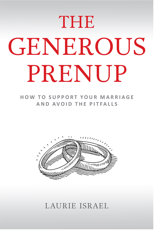Daniel Gilbert is a famous psychology professor and researcher known for his studies on happiness. Columnist Patrick O’Brien cites Gilbert’s principles on happiness while making some interesting claims about the increase in divorce rates in OurDaily.
Concurrent with the adoption of easy divorce has been a relaxation in social attitudes about marriage and family. Compared with mid 20th century Americans, for whom having a marriage and family was a social expectation, we are more likely to view it as one lifestyle choice among many.
As claimed by the boosters of less restrictive marriages, we should see that the smaller share of people who are married today chose it more freely than their grandparents and are more free to leave should they become unhappy in their marriage, and thus they should be happier than previous generations forced to stick it out in unhappy marriages.
However, the share of married women who reported to be very happy declined from 67 percent in 1973 to 60 percent in 1990, and has flatlined as divorce rates have tapered off. Paradoxically, in a culture in which it is more normal to choose not to be married or to get out of an unhappy marriage, fewer people rate their marriages as happy.
This parallels with recent discoveries in the psychology of happiness, which show people grow accustomed to situations they are committed to but continually second-guess decisions they are given the option to change, leading to decreased satisfaction with those decisions (see Dan Gilbert’s talk at the 2004 TED conference).
The ideal of traditional marriage, while not always followed, was characterized by, among other things, lifelong commitment, and was only broken in cases of abuse, infidelity, or abandonment.
And in most cases, it worked. More children grew up with two parents and a greater proportion of people reported being happily married.
Now, however, marriage is not one final choice but reconsidered and second-guessed as circumstances dictate. This change was not caused entirely by no-fault divorce laws, since divorce rates began trending upward in the 1960’s.
However, it is rather telling that it is easier to get out of marriage, once viewed as the foundation of society, than a business contract. Not only is this a formula for increased dissatisfaction even among those in the 60 percent of marriages that have not ended in divorce, it constitutes a fundamental shift in the definition of marriage.
